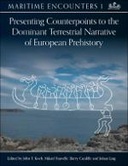Explore

Presenting Counterpoints to the Dominant Terrestrial Narrative of European Prehistory
0 Ungluers have
Faved this Work
Login to Fave
Challenges the terrestrial focus of European prehistory, emphasizing the significance of seascapes, maritime networks, and coastal societies in shaping prehistoric Europe. This book is the first in the multi-author series Maritime Encounters, outputs of the major six-year (2022-2028) international research initiative, funded by Sweden’s central bank. Our programme is based on a maritime perspective, a counterpoint to prevailing land-based vantages on Europe’s prehistory. In the Maritime Encounters project a highly international cross-disciplinary team has embarked on a diverse range of research goals to provide a more detailed and nuanced story of how prehistoric societies realised major and minor sea crossings, organised long-distance exchange, and adapted to ways of life by the sea in prehistory. Recent advances with ancient DNA have brought migration back into archaeological explanation, but little attention has been paid to maritime aspects of these movements or the maritime legacies inherited from indigenous cultures. The formation of the populations, cultures, and languages of Europe are now seen largely as consequences of three great prehistoric migrations: hunter-gatherers repopulating the post-glacial landscape, followed by farmers spreading from Anatolia, and then Indo-European-speaking pastoralists from the steppe. There is a significant gap in this current model that we sense most acutely in Scandinavia and the British Isles. Unanswered questions include: How these groups reached the islands and peninsulas of Atlantic Europe? What types of boats were used? How many people and animals could they carry? To what extent did indigenous coastal peoples contribute traditions and knowledge of boats, boat building, seaways, navigation, and subsistence in coastal environments? How was the long-distance trade in metals organised during the European Bronze Age? And what was the impact of this seacrossing network on the cultures, languages, and populations of the producers and consumers of bronze?
This book is included in DOAB.
Why read this book? Have your say.
You must be logged in to comment.
Rights Information
Are you the author or publisher of this work? If so, you can claim it as yours by registering as an Unglue.it rights holder.Downloads
This work has been downloaded 25 times via unglue.it ebook links.
- 25 - pdf (CC BY) at OAPEN Library.
Keywords
- Ancient
- Ancient history: to c 500 CE
- Archaeology
- Europe
- European History
- Great Britain
- History
- History: earliest times to present day
- Humanities
- Regional & national history
- Social Science
Editions

